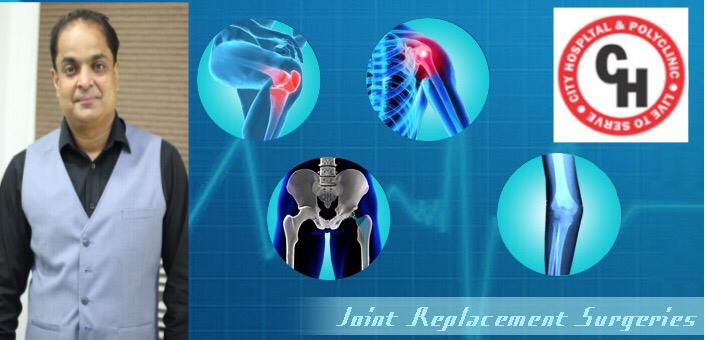+918048051936

This is your website preview.
Currently it only shows your basic business info. Start adding relevant business details such as description, images and products or services to gain your customers attention by using Boost 360 android app / iOS App / web portal.
TOTAL KNEE REPLACEMENT SURGERY Total Knee Replac...

TOTAL KNEE REPLACEMENT SURGERY Total Knee Replacement (TKR), also called as Total Knee Arthroplasty (TKA), is a surgical procedure performed on patients suffering from osteoarthritis of the knee joints. Osteoarthritis is a condition where the cartilage and bones of the knee are damaged leading to pain, deformity of the leg associated with difficulty in walking. Although more commonly seen in elderly patients as a result of wear and tear, a part of aging process, arthritis can also be seen in other disorders such as rheumatoid arthritis or secondary to malunited fractures of the bones forming knee joints. After a thorough clinical and radiological examination by an expert arthroplasty surgeon, a decision regarding the need for Total Knee Replacement can be taken. Depending on these examination findings and necessities of the patient, a particular design and make of implant can be chosen. A team of exert knee replacement surgeons with a trained staff and a well-organized physiotherapy program are pre-requisites of a better outcome, speedy recovery and early return to a more active life. With the development of technology, like Computer Assisted Surgery (CAS), the procedure is more refined, less invasive with more accurate correction of the deformities. How it is done? Two most commonly used approaches while performing TKR are namely Median parapatellar and sub-vastus approaches. The difference between these two is when the vastus, the muscle present in the front of lower thigh region, is either cut in the middle as in Median parapatellar approach or reflected in sub-vastus approach. Each approach with its own advantages, are used routinely and its followers argue about superiority of one approach over the other. Sub-vastus approach is less traumatic as muscle is reflected not cut, so physiotherapy like stair climbing can be started early in the post-operative period. However it is skillfully demanding and cannot be performed in very stiff knees. Median parapatellar approach is relatively easy, but traumatic to muscle so stair climbing has to be delayed. However in long term the final result achieved in terms of range of motion and the strength of muscles is similar with both the approaches. Implants used in TKR play a crucial role in achieving a satisfactory result after the procedure on long term. So implant selection is an important aspect we, at SaiShree Hospital expect that all our patients should be aware of what type of implant is used in their body. The type of implants that can be used in TKR can be broadly grouped in to two; depending on whether the PCL- The Posterior Crucial Ligament is retained or sacrificed. PCL is present in the knee, The function of which is to provide stability to knee joint. The first type, cruciate retaining implants are the once where PCL is saved. In the second type, Cruciate sacrificing implants, as the name suggests, PCL is sacrificed and is replaced with CAM and Post mechanism in the implant. The types of implants that are available in these two designs are further available in two types: The fixed bearing implants namely all Poly and Metal Back. And, mobile bearing implants where the insert is mobile which moves through the knee movements allowing more movement and less wear and tear. Some of these implants also come with Oxynium coating which helps in reducing wear and tear, thus increasing the life of implants.

